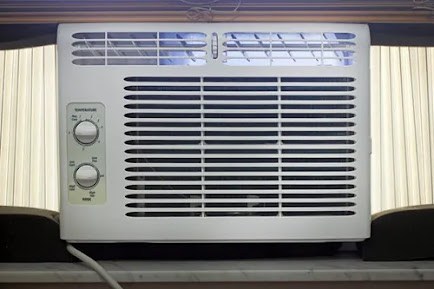PROCESS OF CLEANING AN AIR CONDITIONER.
This blog will teach a person on how to clean the air conditioner and make the living area suitable and comfortable at no cost.
CAUSES OF A DIRTY AIR CONDITIONER
Accumulated dust and debris
Over time, dust, dirt, pollen, and other debris can build up on the various components of an air conditioner, such as the filters, coils, and fan blades. This buildup restricts airflow and reduces the efficiency of the system.
Clogged or dirty filters
Filters are designed to capture airborne particles and prevent them from entering the air conditioner. However, if the filters are not regularly cleaned or replaced, they can become clogged with dust and dirt, hindering proper airflow and allowing contaminants to recirculate in the air.
Lack of regular maintenance
Regular maintenance, including cleaning and servicing, is essential to keep an air conditioner clean and functioning optimally. If maintenance tasks such as cleaning the coils, lubricating moving parts, or inspecting and cleaning the blower assembly are neglected, the system can accumulate dirt and suffer from decreased performance.
Surrounding environment
The environment in which an air conditioner operates can contribute to its dirtiness. For example, if the air conditioner is located near construction sites, industrial areas, or areas with high levels of pollutants, it can easily get dirty due to airborne particles, chemical residues, or pollution.
Pet hair and dander
Homes with pets, particularly those with furry animals, may experience increased dirtiness in their air conditioner due to pet hair and dander. These substances can get sucked into the system, clogging filters and diminishing efficiency.
Poor filtration or ventilation
If the air conditioner's filtration or ventilation system is inadequate, it can result in poor air quality and a dirtier system. Insufficient filtration may allow more contaminants to pass through, while inadequate ventilation can trap stale air and contribute to the accumulation of pollutants.
To mitigate these issues and maintain a clean air conditioner, regular cleaning and maintenance should be performed, filters should be cleaned or replaced as needed, and attention should be paid to the system's surrounding environment.
EQUIPMENTS NEEDED FOR CLEANING AN AIR CONDITIONER
A vacuum cleaner with soft-brush attachment, air conditioner cleaner, a water hose with a sprayer, work clothes, gloves, and eye protection
STEPS OF CLEANING AN AIR CONDITIONER
Cleaning air conditioners is an important maintenance task to ensure their optimal performance and longevity. Here are the steps involved in cleaning an air conditioner:
Preparation
Turn off the air conditioner and unplug it from the power source to ensure safety. Gather the necessary tools, including a screwdriver, vacuum cleaner with attachments, water, mild detergent, and a soft cloth.
Outdoor unit cleaning
Start by cleaning the outdoor unit (condenser). Remove any debris, leaves, or plants around the unit that may obstruct the airflow. Use a vacuum cleaner or brush to carefully clean the coils and fins.
Filter cleaning
Locate and remove the air filter(s) as per the manufacturer's instructions. Clean reusable filters by gently washing them with water and mild detergent. Allow them to dry completely before reinserting. If the filter is disposable, replace it with a new one.

Interior cleaning
Open the air conditioner's front panel or access panel. Use a vacuum cleaner to remove dust and debris from the interior components, such as coils, blower fan, and drain pan. Be gentle to avoid damaging any delicate parts.
Coil cleaning
If the coils are visibly dirty, use a soft cloth or brush and a mixture of water and mild detergent to clean them. Be cautious not to bend or damage the coils. Rinse off the detergent with water and allow the coils to dry completely before reassembly.
Drain pipe cleaning
Locate the condensate drain pipe and visually inspect it for any clogs or blockages. Use a small brush or pipe cleaner to clear any debris or buildup in the pipe.
Reassembly and testing
Once all the components are clean and dry, reassemble the air conditioner following the manufacturer's instructions. Plug it back in and turn it on to ensure it is working properly.
Conclusion
It is recommended to clean air conditioners at least once a year, or more frequently in dusty environments or during heavy use periods. Regular cleaning helps maintain the efficiency of the unit, prevents blockages, and improves indoor air quality. If you're unsure or uncomfortable with cleaning the air conditioner yourself, it's best to consult a professional HVAC technician.




Comments
Post a Comment